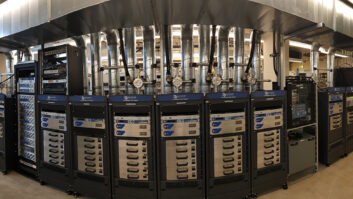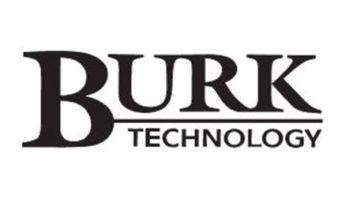Trends in Technology: Work Smarter not Harder
Aug 1, 2014 12:44 AM, Doug Irwin, CPBE DRB AMD
Air Conditioners are Dumb
One would think that as transmitters get more and more reliable, there would be less involved in taking care of a remote transmitter site. Oddly enough, I find that”s not true; the various items that live at a remote site, cumulatively, require just as much attention over the long run.
Consider the various items commonly found at a site: air conditioners, UPSs, generators and all manner of items that ultimately communicate with you via IP, such as cameras, remote weather stations and the like. While new transmitters come with their own IP-based communications systems, a lot of other devices are too rudimentary, or too old, to have anything like remote monitoring capability. Some devices have �optional� IP communications capability that perhaps you haven”t considered. Let”s take a look at ways of monitoring and controlling these types of devices.
Air conditioners are among the most simple and �dumb� devices to be found at a transmitter site. Still, their importance can”t be overstated. Why does it seem like air conditioners always break on a holiday weekend? Or more important: Is there a way to tell that something is amiss, before it breaks, and before that weekend call-out?
If you are fortunate enough to �spec� the AC units as part of a capital project, you might want to consider ones that are built for data center usage, because it”s likely that they will (at least optionally) have network capability. An excellent example would be the Challenger series from Liebert; not only can you keep track of the unit by way of IP using a browser, but you can also take advantage of its SNMP capability, setting it up as an agent, and then controlling it with an SNMP manager.
But I know that most AC units in the field are too old or too �simple� to have that capability, so let”s focus on those. The most obvious things to measure at the site are the room temperature and the AC”s �cold air� outlet temperature. On your remote control you would set a limit so that when the room temperature reaches a certain level, a phone call or e-mail is issued. But what does this really tell you, aside from the fact that a problem exists? While it”s true that you never want to be surprised when opening the transmitter room door to find that the temperature is 100+ degrees, there must be something else that can be done to give you more of a warning.
Consider the following:
- Set additional temperature thresholds, with outgoing messages as they are reached. This allows you to know the temperature is increasing, and as time goes on, you”ll know if this is normal, or not.
- Detect whether or not the air conditioner is �called� by the thermostat.
- If the temperature is increasing, and if the air conditioner is called, then the outlet air should indicate its normal �cool� temperature, and clearly the room temperature should start to decrease.
Even with a simple remote control, you could analyze the data at hand (temperatures and status) and tell whether everything is working as it should. However, since you are likely doing other things, you could also develop a script for your remote control system that would analyze this information for you, and contact you with an alarm only if a problem exists.
There are at least two remote controls out there that will support this. First, you could use Auto Pilot 2010 with Jet Active Flowcharts from Burk. In the case of older Burk units (like the ARC-16) this runs on a separate Windows-based machine, and communicates with the remote control via a serial connection. The flowchart uses information gathered from the remote control (analog data and status) and provides control via the normal relay outputs.
Another option would be a remote control that supports ScriptEasy from WorldCast Systems: the Mini Control Silver or Relio would handle this application easily. Since either of those remote controls acts as an SNMP agent, you could potentially read your AC temperatures and status outputs by way of IP, thus effectively �modernizing� an unsophisticated (or just plain old) AC unit.
Even with a simple remote control, you could analyze the data at hand (temperatures and status) and tell whether everything is working as it should. However, since you are likely doing other things, you could also develop a script for your remote control system that would analyze this information for you, and contact you with an alarm only if a problem exists.
There are at least two remote controls out there that will support this. First, you could use Auto Pilot 2010 with Jet Active Flowcharts from Burk. In the case of older Burk units (like the ARC-16) this runs on a separate Windows-based machine, and communicates with the remote control via a serial connection. The flowchart uses information gathered from the remote control (analog data and status) and provides control via the normal relay outputs.
Another option would be a remote control that supports ScriptEasy from WorldCast Systems: the Mini Control Silver or Relio would handle this application easily. Since either of those remote controls acts as an SNMP agent, you could potentially read your AC temperatures and status outputs by way of IP, thus effectively �modernizing� an unsophisticated (or just plain old) AC unit.
continued on page 2
Trends in Technology: Work Smarter not Harder
Aug 1, 2014 12:44 AM, Doug Irwin, CPBE DRB AMD
Keep Track of your Generator
Generators are similar to AC units in that if you are buying a new one, you”ve got a great opportunity to take advantage of the 21st century features that many older sets simply don”t have. The perfect example of that is the gathering of all the engine data along with voltage and current readings on the generator itself. Kohler calls its system Power Scan, Cummins (Onan) calls its system Remote Power Monitoring and Caterpillar calls its system Condition Monitoring.
But like so many of us, you may have an older generator that simply has nothing in the way of remote monitoring. Let”s see what we can do in that case. Between test and/or use periods, there are a few generator parameters you can keep track of with your remote control:
- Monitor the voltage across the battery. You should always see the �float� voltage from your battery charger.
- Monitor the block heater operation by measuring the current flow through the heater itself.

Figure 1: Generator Monitoring
The photo (Figure 1) shows both block-heater current sensor as well as a battery voltage sensor (built by Jerry Burnham). The block-heater current sensor works like an old-fashioned tower light sensor, with the load wire wrapped around a ferrite donut on its way to the connector. A voltage is developed across another couple of turns of wire around the same donut; those leads are used to generate a small DC voltage that drives the remote control analog input. The battery voltage sensor makes use of a fairly high resistance potentiometer connected across the battery terminals. The wiper arm is used for the output. Both pieces of information are sent in to the remote control, and are used for remote readings of course and more importantly, alarm outputs. (A word of caution here: Mount the sensor close to the battery, and also be certain that the remote control �ground� and the DC �ground� of the generator are the same. If not, consider using an isolating DC amplifier.)
Just because both of those parameters look good doesn”t mean that your generator is guaranteed to start when you need it. However, with the wrong battery voltage, you know it won”t; and with a cold block, chances are you will have problems as well.
Tower Light Monitoring
If you have a tower with lights, you know that meaningful and reliable measurements are an absolute necessity. Many broadcast engineers have rolled their own tower light monitors over the years, but the availability of devices such as the FM Services TLM-1 makes it much easier to build and configure a system. The TLM-1 Tower Light Monitor is a microprocessor-based system designed to monitor the status of FAA Type A incandescent tower lights. It has an overall summary alarm output, as well as individual alarm outputs for flasher, beacon, obstruction lights, and the photocell itself, all optically-isolated. The alarm outputs are normally closed without alarm conditions, allowing you to know that the unit has power applied. There”s a one-button calibration procedure, and according to the manufacturer, the TLM-1 �insures total lighting compliance � alarms for single-bulb failure (marker and beacon), beacon flash rate or on/off ratio outside of FAA specifications and photocell failure.�

Figure 2: Tower light monitoring
The TLM-1 is fairly compact and can be installed in a NEMA box, as in Figure 2 (again, construction by Jerry Burnham). The TLM-1 is in the lower-left hand corner of the NEMA box.
You may have a tower that has a medium intensity lighting system installed upon it � in which case you could consider something like the MON-950 from International Tower Lighting. The MON-950 can utilize direct wired Ethernet or wireless cellular communication to provide monitoring of tower lighting systems, and it works with SNMP manager software to provide real-time and historical reporting on tower lighting systems. The MON-950 supports �virtually all existing medium intensity lighting systems� and is adaptable to new systems. It”s capable of monitoring triple-beacon systems for towers over 350 feet high; it has remote control capacity for day and night mode; it has 10 dry-contact inputs and two Form C relay outputs, and it has an embedded web browser for system configuration.
continued on page 3
Trends in Technology: Work Smarter not Harder
Aug 1, 2014 12:44 AM, Doug Irwin, CPBE DRB AMD
Transmission Line Pressure
Transmission line pressure has been something typically looked at during inspections and noted in a log; if the pressure suddenly leaked to zero between visits most engineers wouldn”t know about it. There are some accurate and inexpensive devices out there that will help you in developing a remote control system that will alert you to problems between site visits.

Figure 3: Transmission line pressure monitoring
Dennis Sloatman, the director of engineering for Clear Channel in Los Angeles, has developed numerous monitoring systems using Burk”s Jet Active scripting and sensors from Omega. Take a look at Figure 3. The operation of this script, which measures transmission line pressure, is straightforward and occurs in this order:
- The Burk remote control continually measures the line pressure to see if it exceeds 3.5 pounds.
- If it doesn”t, wait 15 seconds, measure again
- If it still doesn”t, take log entry, and alert engineers via e-mail
- Continue to measure pressure every 20 seconds
- If the pressure exceeds 3.0 pounds take log entry and alert engineers via e-mail
- Assuming the pressure now exceeds 3 pounds, wait 10 seconds, and start the process over again
Omega makes an entire line of pressure transducers; in this application Dennis uses the PX319-015G5V. This device has a 0�5 VDC output that tracks the pressure linearly, with NIST-traceable calibration and .25 percent full-scale accuracy. It uses a standard NPT 1/4-inch-18 type fitting. You could make a system for monitoring nitrogen tank pressure by using a similar script and a PX319-3KG5V, which goes up to 3000 pounds of pressure. (See Figure 4.)

Figure 4: Pressure sensor
continued on page 4
Trends in Technology: Work Smarter not Harder
Aug 1, 2014 12:44 AM, Doug Irwin, CPBE DRB AMD
Uninterruptible Power Supplies
UPSs have been the topic of controversy among radio engineers since they started showing up at more and more transmitter sites that had one or more devices with internal microprocessors. Personally I feel that they are a mixed blessing from a reliability standpoint. That said, however, if you keep track of what is going on inside of them, you can at least know if they are ready to fulfill their duty or not. Many UPSs have remote management capabilities � even smaller inexpensive units.
Let”s take a look at the APC Smart UPS line, as an example. This line has an option you may not know about, the AP9630 network card. The installation of this card, and an Ethernet connection, allows you to look at its parameters remotely. Taking that one step further, if you have a remote control that makes use of SNMP (or some other SNMP manager), you can remotely monitor what”s going on �in the background� without actually having to browse the thing. (After all, you”re not really at work all of the time, right?)
Take a look at Figure 5. This is a simple user interface, accomplished with a Relio from WorldCast Systems. This display shows information gathered by the Relio, which is located in our rack room in Burbank. The Relio is in constant contact (by way of SNMP) with the three different APC UPSs seen in the display; two of the UPSs are next to one another in adjacent racks, but one is in another building �on-campus� at our Briarcrest transmitter site in Beverly Hills. Alarms are configured so that if the rack voltage drops below a pre-set threshold, or if the UPS output gets too high, or too low, e-mails are issued. At that point someone in engineering would take a look at this same display to see what was going on at the site. (The green �field� turns red in the event power is off in the rack.)

Figure 5: UPS Status via SNMP on Relio remote control
I”m a big believer in remote monitoring, as you can likely guess having read this far. Even after I close the door to the transmitter room, I want to be able to figure out what”s going on inside; the current crop of remote controls make that so much easier than when I started out. It �used to be� that we would have one or two stations in our purview; but today, with a half-dozen or more, it”s an absolute necessity to make your use of time as efficient as possible. You can”t necessarily visit every transmitter site as often as you would like. By the correct application of remote monitoring, you can know what you need to know without having to make constant trips. �Work smarter, not harder� is a clich� that applies very, very well in the life of a broadcast engineer.












